Living Building Blocks
Scientists have made a prototype biocomposite blockade up of a blend of bacteria, fungi and feedstock that can be assembled into human-sized, living structures with self-healing and environmental sensing capabilities.
Learn more (opens external site)
A post-doctoral researcher with the Advanced Science Research Center at the CUNY Graduate Center (CUNY ASRC) has made an important step toward understanding how complex mixtures of biomolecular building blocks form self-organized patterns.
Learn more (opens external site)
Navigation is a critical ability for animal survival and is important for food foraging, finding shelter, seeking mates and a variety of other behaviors. Given their fundamental role and universal function in the animal kingdom, it makes sense to explore whether space representation and navigation mechanisms are […]
Researchers have been working to create a superhydrophobic surface that prevents ice accumulation. New fabrication methods have enabled this scientific breakthrough. This scientific discovery will help to save human lives by preventing ice accumulation in areas that are unsafe for ice accumulation.
Learn more (opens external site)
Recent biological studies on water strider insects revealed how they maintain stability and maneuver on the surface of water. While macroscale bodies use buoyancy, these very small insects use surface tension force to balance their weight on water. This paper proposes a biologically inspired miniature robot that […]
Zhongning Goji berries (ZNG), a DMM, are illegally adulterated in the market by adding non Zhongning goji berries (NZNG). Consequently, the development of biomarker(s) is necessary for proper identification of ZNG and NZNG. In this study, a nontargeted metabolomics approach based on ultra high-performance liquid chromatography coupled with quadrupole time-of-flight mass […]
Beetle Spawns New Material
“The bumps, which attract water, are surrounded by waxy water-repelling channels. “That allows small amounts of moisture in the air to start to collect on the tops of the hydrophilic bumps, and it grows into bigger and bigger droplets,” Rubner said. “When it gets large, it overcomes the pinning force that […]
Scientists at Scripps Research have unveiled a new tissue-clearing method for rendering large biological samples transparent. The method makes it easier than ever for scientists to visualize and study healthy and disease-related biological processes occurring across multiple organ systems.
Described in a paper in Nature Methods on March 28, 2022, and […]
Bioinspired temporal supramolecular polymerization
Thriving natural systems precisely regulate their complex chemical organizations in space and time by recruitment of a complex network of fuel-driven, kinetically controlled, out-of-equilibrium transformations. Indeed this provides an active, adaptive and autonomous smart actions & functions. In contrast, synthetic systems exhibit simpler behavior owing to thermodynamically driven supramolecular polymerization with […]
News, Orb-weaver spider uses web to capture sounds
A study of orb weaver spiders finds their massive webs also act as auditory arrays that capture sounds, possibly giving spiders advanced warning of incoming prey or predators.
In experiments, the researchers found the spiders turned, crouched or flattened out in response to sounds, behaviors that spiders have been known to […]
Key to success of drug-resistant bacteria
Researchers have discovered how Gram-negative bacteria — which cause drug-resistant pneumonia, bloodstream infections, and surgical site infections in hospitalized patients — finish building a crucial component of their outer membrane that shields these pathogens from attacks by the immune system and antibiotics. The new findings could accelerate the development of novel drugs to counteract these […]
Researchers from Monash University have discovered a new design motif derived from the rigid external covering of invertebrates that may help create more damage tolerant materials for future building and construction.
In a paper published in Nature Communications, Professor Wenhui Duan from the Department of Civil Engineering […]
News, Insect Silk as Templates
The CSIRO Silks group is primarily interested in using proteins as polymers for rational design. Naturally occurring structural proteins are ‘information-rich’ molecules. Based on the precedent set by nature, these structural proteins provide a rich landscape for the rational design of advanced functional materials. Advances in molecular biology make it possible to readily modify the […]
The following paper explores the quill properties and structures of the Hystrix(Old World) and Erethizon(New World) porcupines. Both quills have a keratinous cortex filled with closed cell foam, that have good tensile strength, extensive deformation properties, and compressive capabilities. The main difference between the quills is the presence of stiffeners inside […]
Researchers from the University of Oregon have grown rodent retinal neurons on a fractal-patterned electrode, one that mimics the repeating branching pattern in which neurons naturally grow. These neurons, which themselves are fractals, will connect better to a fractal-patterned electrode than they do to more traditionally shaped electrodes, allowing better signal […]
The Future of Bird-Friendly Glass is Clear…
While the advancements and technological discoveries humans make may seem useful to us, they often impact other animals or elements in our world very differently. We typically only acknowledge our own needs and design solutions for those, without realizing what affect it may have elsewhere. One example of this are the […]
Study reveals shock-absorbing ability of woodpecker beaks
Researchers at the Mississippi State University have discovered the exceptional energy dissipation abilities of the woodpecker’s beak. Woodpeckers use their beaks to make holes in trees for a variety of reasons, the most prevalent of which is to find food. Insect larvae discovered beneath the surface of tree bark are eaten […]
Paper, Orb Webs Act as Antennas for Frequencies
New research shows that hearing in a species of orb-weaving spider called the bridge spider (Larinioides sclopetarius) is not constrained by the organism’s body but is extended through outsourcing hearing to its proteinaceous, self-manufactured orb web.
Learn more (opens external site)
Structure and mechanical behavior of a toucan beak
In nature, toucans have large and hard beaks that they use to break up food. Despite the size of their beaks, it is actually very light. After researchers investigated the beaks of toucans, they found out that the beak consists of a network of micro scaffolds and thin membranes, which are covered by a hard […]
New biological tools provide new techniques to probe fundamental biological processes. Here we describe the burgeoning field of proteolysis-targeting chimeras (PROTACs), which are capable of modulating protein concentrations at a post-translational level by co-opting the ubiquitin-proteasome system. We describe the PROTAC technology and its application to drug […]
Transitions to terrestriality have been associated with major animal radiations including land snails and slugs in Stylommatophora (>20 000 described species), the most successful lineage of ‘pulmonates’ (a non-monophyletic assemblage of air-breathing gastropods). However, phylogenomic studies have failed to robustly resolve relationships among traditional pulmonates and affiliated marine lineages that comprise […]
Jacob Peters and L. Mahadevan from Harvard University, with Orit Peleg from the University of Colorado sought to detail the precise changes that a swarm of honeybees makes as air temperatures rise and fall. It was known that, when unable to relocate to a place with a more habitable temperature, a […]
“In modern societies, sleep deprivation is a serious health problem. This problem could be induced by a variety of reasons, including lifestyle habits or neurological disorders. Chronic sleep deprivation (CSD) could have complex biological consequences, such as changes in neural autonomic control, increased […]
Abstract:
Besides the life-as-it-could-be driver of artificial life research there is also the concept of extending natural life by creating hybrids or mixed societies that are built from natural and artificial components. In this paper we motivate and present the research program […]
Paper, Energy Efficiency Inspired by Bees
Kerbel and Kulyk were interested in designing an accessible, convenient, and sustainable energy efficiency technology to reduce pollution offsets and costs.
They were inspired by the complex communication system in beehives called emergence. Kerbel and Kulyk mimicked this bee communication by developing an algorithm that allows all parts of a […]
The bioengineering of cannabis
Genetic modification could enable industrial-scale production of cannabinoids that have pharmaceutical potential. Genetic engineering could provide more efficient alternatives. Some researchers and biotechnology companies are aspiring to replace cannabis plants with microorganisms that have been genetically enhanced to spit out THC, the non–psychoactive compound cannabidiol (CBD), and myriad other cannabinoids of pharmaceutical interest. Others are […]
Reversing hearing loss with regenerative therapy
Frequency Therapeutics is a biotech company that is seeking to reverse hearing loss not with implants or hearing aids but through regenerative therapy. By planting stem cells in the ear, it enables tiny hair cells to emerge enabling its users in fix their speech perception aka hearing. So far 200 people […]
Since the birth of synthetic hydrogel 60 years ago,
hydrogels possessing various useful properties and functions have
been developed. The research directions of hydrogels have
expanded to diverse application fields as well. However, in contrast
to natural hydrogels found in biological soft tissues, which have
elaborate […]
Fly brains can detect threatening drones
Bio-inspired defenses may help mitigate the threat of IED carrying drones in combat. The latest proof comes out of Australia, where researchers have mapped the visual systems of hovering insects as a means of detecting the acoustic signatures of drones up to 2.5 miles away. The hover fly, which can hover […]
To test if a single gene could affect an entire ecosystem, a research team conducted a lab experiment with a plant and its associated ecosystem of insects. They found that plants with a mutation at a specific gene foster ecosystems with more insect species. The discovery of such a ‘keystone gene’ […]
News, Human Genome Complete DNA Genetics
This article talks about the completion of the human genome. 200 million DNA bases have been added, which accounts for 8% of the genome. Since it is a collection from multiple people, it is a “fake” genome. This creation will be beneficial for many more discoveries in science.
Learn more (opens external site)
Scientists have published the first complete, gapless sequence of a human genome, two decades after the Human Genome Project produced the first draft human genome sequence. According to researchers, having a complete, gap-free sequence of the roughly 3 billion bases (or ‘letters’) in our DNA is critical for understanding the full […]
Paper, Suction Feeding by Elephants
Despite having a trunk that weighs over 100 kg, elephants mainly feed on
lightweight vegetation. How do elephants manipulate such small items?
In this experimental and theoretical investigation, we filmed elephants at
Zoo Atlanta showing that they can use suction to grab food, performing […]
My graduate research explores some of evolution’s most impressive inventions, many of which can be found in birds. Specifically, I study bird flight behaviours and how relationships between body mass, wing sizes, species relatedness and other biological traits have evolved to generate the extravagant flight we see in many species.
Ancient sea creatures pioneered the gallop
Animals can move using a regular gait, or an irregular gait. A regular gait means that the steps (however one defines it) occur on a regular interval, however this is not true of irregular gaits. An example of irregular gait is horse galloping. Humans practice a regular gait walking or running. […]
This publication resonates with what we talked in BioMaterial lecture this week. Spider’s silk is known to be around five times stronger than that of steel!
Learn more (opens external site)
New findings describe a novel way to reduce the energy people spend to walk, as much as by half, which could have applications for therapy received by patients with impaired walking abilities. The metabolic rate of walking can be reduced by applying a constant forward force at the center of mass. […]
The potential for using marine microbes for biodiscovery is severely limited by the lack of laboratory
cultures. It is a long-standing observation that standard microbiological techniques only isolate a very
small proportion of the wide diversity of microbes
that are […]
New study is first anatomical evidence for how two major groups of bats use echolocation differently.
Learn more (opens external site)
Paper, The Structure and Properties of Spider Silk
Silks from the spider’s orb-web are amongst the very best structural materials produced by nature: spiders can produce a large aerial filter from a minimal amount of material. By studying how the structure and properties of silks are matched to their mechanical function, we can increase our general understanding of structure-property relationships in fibrous polymers.
[…]
Learn about our two Decals!
 Click here to find out more about our Fall Bioinspired Design Decal and our Spring Bioinspired Design in Action Decal – ALL MAJORS are welcome.
Click here to find out more about our Fall Bioinspired Design Decal and our Spring Bioinspired Design in Action Decal – ALL MAJORS are welcome.Berkeley BioDesign Community
 Click here to learn about the BioD: Bio-Inspired Design @ Berkeley student organization or here to signup for more info.
Click here to learn about the BioD: Bio-Inspired Design @ Berkeley student organization or here to signup for more info.Search
Student Login

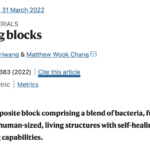

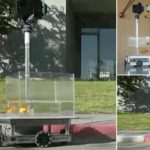


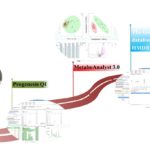

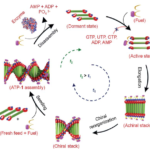


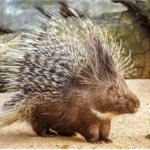
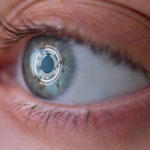
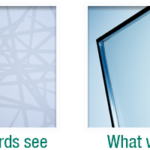

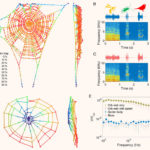





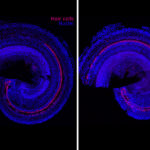
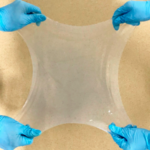



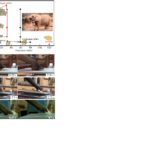

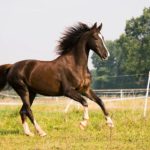





I imagine that the neurological circuits underlying these processes are governed by both 2d spacing maps with their brains as…
to reduce the impact of car accidents, it may be possible to study the force diverting physics of cockroaches to…
you see this type of head-bobbing stability in many avian creatures related to pigeons like chickens. the head ability to…
not like they taught horses how to run! this is an example of convergent evolution where both sea creatures and…
The brain functions in a similar way with neuronal connections. our brains are able to utilize the multiplicity of connections…